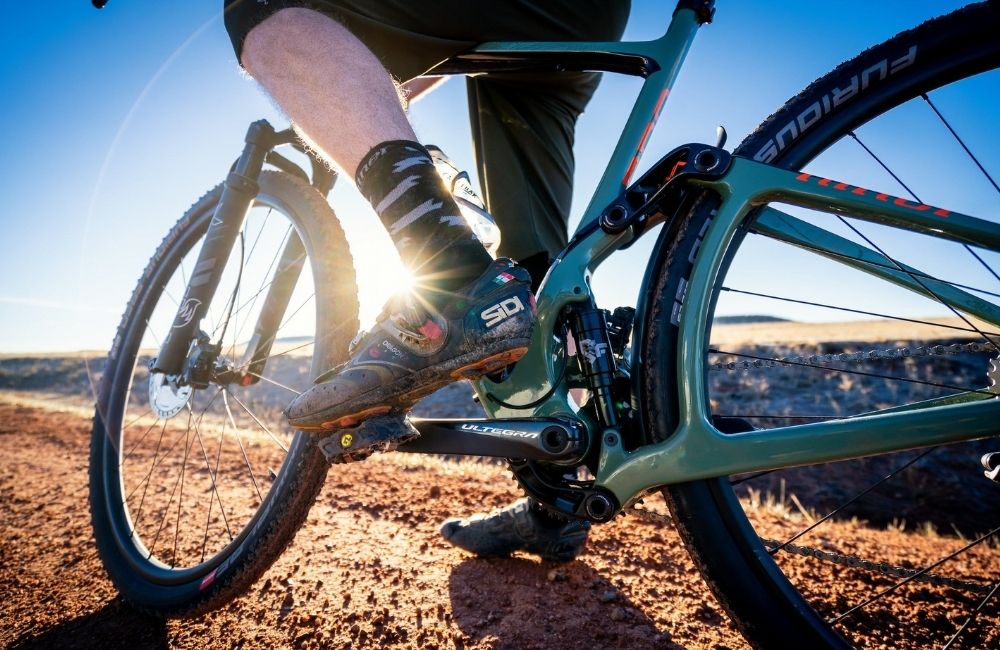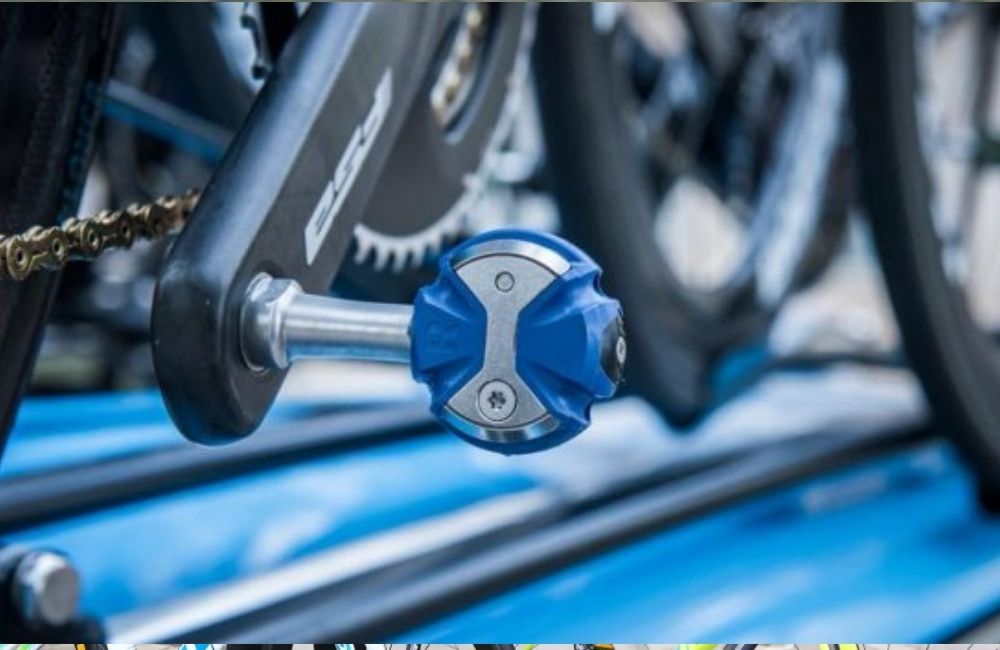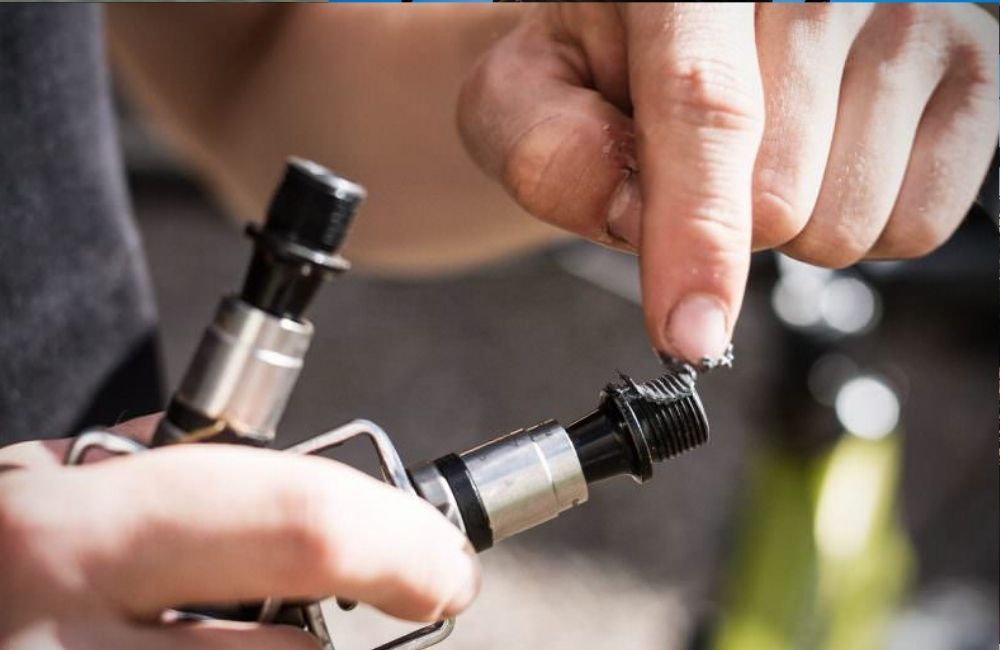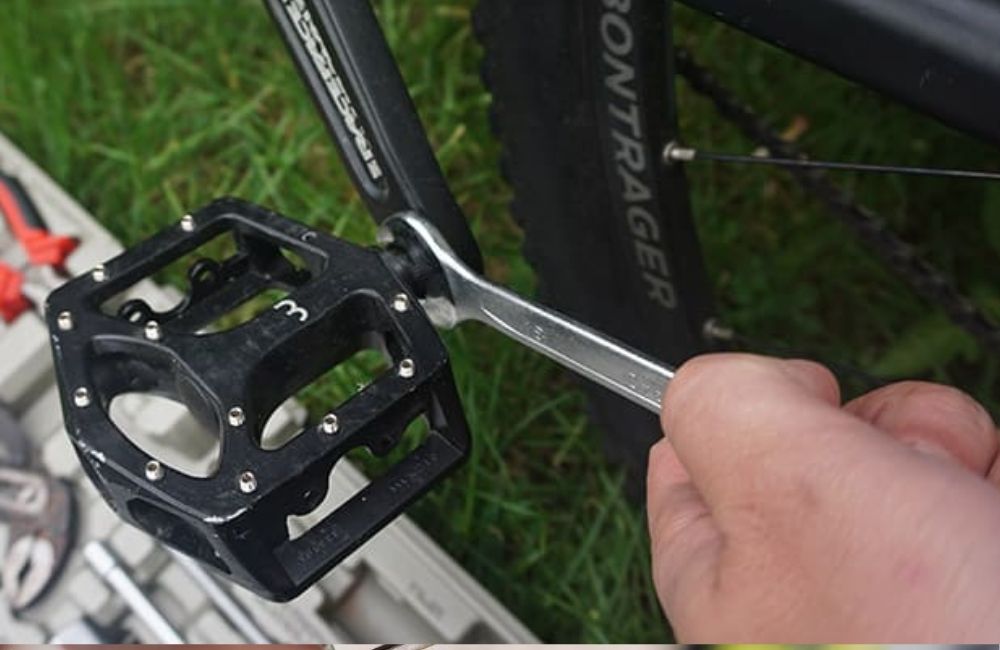Table of Contents

Do you know which pedal is reverse threaded? If you’re not sure, it’s always a good idea to double-check. It can be easy to get confused when looking at the pedals on your bike. The left pedal spindle is reverse threaded and the right side is normal. Remove the pedal while facing the crank arm by turning it clockwise. Because the correct side is normal, turn it anti-clockwise to loosen it.
You should never ride a bicycle with loose pedals or pedals that are incorrectly installed because they could come off while riding and cause an accident! Always double-check before getting on your bike for a ride!
What is a reverse threaded pedal?

Remember, the left pedal spindle is reverse threaded. Turn it clockwise to remove and tighten when facing away from your bike frame or fork while using a spanner wrench on one end of each loosened nut’s threading tool (torque wrench). For your toolsets, the correct side must be turned anti-clockwise; there’s no need for an additional hand now!
Why are pedal threads reversed?
You may have wondered why pedals are threaded the way they are. Pedals on bicycles and other pedal-powered vehicles, like motorcycles, unicycles, and penny-farthings (bikes with one big wheel in front), spin around an axle that is attached to the crank arms or legs of the rider. The axle has threads on each end – one side for attaching the right pedal and another for attaching the left pedal. These two sides need to be different so that when you put your foot down while riding, only one side will engage with your shoe at a time. This prevents both feet from spinning together as if they were connected by a single chainring or cog. It also helps prevent injury by keeping your feet from slipping off of either pedal during use.
Do you know which side of your pedal is reverse threaded?
If you don’t, it can be a serious safety hazard. To assist prevent it from becoming loose by precession, the left-side (usually the non-drive-side) pedal spindle is left-hand threaded (reverse) and the right-side (usually the drive-side) pedal spindle is right hand threaded. This means that if your pedals are not installed correctly they could become very dangerous for cyclists.
You can easily find out which way your pedals thread by looking at them or using this guide here! Once you know, all you have to do is install them in the correct direction and feel safe knowing that they won’t come undone while riding. It only takes a few minutes but it will save you from injury down the road!
Do you know how to remove your pedals?

It can be a little confusing when it comes to removing the pedals on your bike. You might have heard that one side is reverse threaded, but what does that mean? And which way do you turn it? If this sounds like something you’ve been wondering about, then read on!
When you buy new pedals for your bike, they will come with instructions telling you exactly how to install them and take them off again. Now there won’t be any confusion when it comes time for maintenance or repairs!
Are all pedals reverse thread?
Do you know which pedal goes where? It’s easy to get confused when it comes to pedals. You might think that the left side pedal is always a reverse thread, but this isn’t true! The right side pedal has a right-hand thread (removes counterclockwise, installs clockwise). The left side pedal has a left-hand thread (removes clockwise, installs counterclockwise) and can be confusing if you’re not used to it.
Here’s an example of what happens when someone doesn’t pay attention and puts the wrong kind of pedal on their bike…it makes for some pretty dangerous riding! So make sure you check out our article about how to figure out which type of pedals are on your bike before putting them on or taking them off again. That way, everyone will stay safe while they ride their bikes around town.
How tight should your pedals be?
Pedals are an important part of the bike, but they can be easy to forget about. If you don’t have them tightened properly, it could lead to a crash and damage your crank arm threads beyond repair. Pedals are simple to install when your know-how.
You should always double-check that the pedals are firmly snug before riding. They shouldn’t be herculean tight, but they also shouldn’t be loose enough for them to fall off while riding either. Losing a pedal is a recipe for crashing and having one to lose can cause damage to the threading on your crank arms which will cost more money in repairs than if you had just checked beforehand! It only takes 5 minutes so check now before heading out for a ride!
How tight should clipless pedals be?
If so, it’s important to know that they should be set up a bit loose. This will help prevent accidents and falls when you first start riding with them. You can always tighten the tension as your skills improve and you become more comfortable on your bike.
When the pedals are too tight, it can cause problems like knee pain or even injury. It may also make it difficult for you to get out of the pedal quickly if needed in an emergency. So keep them loose until you feel confident enough to adjust them yourself!
Should I lubricate pedals?

Pedals are one of the most essential elements of a bike. They’re what keep you moving forward and allow you to break when necessary. But dirt, sand, and dust can conspire to wear down the threads on pedals, making it tougher to pedal smoothly and shortening the lifespan of these parts. So if that sounds like something that might be happening with your pedals, then read on!
Here’s how to lube your bike pedal in 3 simple steps!
1) Remove the dust cap from the end of the pedal axle by using a screwdriver or coin
2) Apply some grease inside where the threads meet
3) Reattach the dust cap and you’re done! You can also use this same process for other parts on your bikes like gears and chains if they need some TLC as well.
Pedals don’t require grease or lubrication to the same extent a bike chain or gearbox would since these components are costly and difficult to replace. Dirt, sand, and dust, on the other hand, can conspire to wear down the threads on pedals, making it more difficult to pedal smoothly and reducing their lifespan. Regular cleaning is crucial.
What is precession?
Precession is a process that occurs in rotating systems, such as wheels and spinning tops. The term “circular motion” refers to an object’s rotation around its axis. In other words, it’s when something rotates on its axis while rotating around another object or point. This phenomenon can occur in any system with a central axis of symmetry. For example, if you were to spin a top on your finger, it would begin to wobble because of precession because two forces are acting upon it – gravity and friction from your finger. The top will then start rolling along with your finger until it falls off into your hand again because one force (gravity) overcomes the other (friction). However, if you were to let go at just the right time after letting go of the top so that it was spinning exactly perpendicular to Earth’s gravitational pull (in other words, parallel with Earth’s surface), then this force would not overcome friction and therefore no precession would take place; instead, both forces would cancel each other out and cause zero acceleration for all points on the top except those directly below its center of mass where they add up together creating only one vector component pointing downwards towards Earth’s center which causes only downward acceleration for all points on the top except those directly beneath its center of mass where they add up together creating only one vector component pointing downwards towards Earth’s center which causes only downward.
Why are left bicycle pedals reverse threaded?
It’s a bit of an oddity that most people don’t realize. The pedal spindle on the left side is reversed to prevent it from coming loose while riding. But, if you think about it, this makes perfect sense when you consider how our bodies work in motion. Every person has a dominant hand and foot which use for different tasks depending on what you are doing at the time. When pedaling with your right leg, your body naturally twists into itself more than when using your left leg because of this dominance. This creates a torque on the pedal spindle which must be counteracted by threading opposite of normal so that everything stays tight and secure during rides.
So next time you hop onto your bike make sure to check out those pedals! You might not even notice them unless someone points them out but they can tell quite a story about how bicycles work!
Pedal maintenance and care tips

1. Keep your bike in good working order by checking the tire pressure, brakes, and chain tension
2. Clean your bike regularly to avoid getting rust or dirt build-up on the frame
3. Replace worn out parts with new ones when necessary – these can be found at most hardware stores
4. Check for loose screws and tighten them before they fall off
5. Use a bicycle lock to protect it from theft when outside of your home
6. Take care of your bike so that it lasts longer!
The disadvantages of switching from a forward thread to a reverse threaded pedal
1. Forward thread pedals are more common than reverse threaded pedals
2. Reverse threaded pedals require less energy to turn the crank, so they’re easier on your knees and legs
3. The main disadvantage of a forward thread is that it can be difficult to get into gear when you’re starting because the chain has to go over the top of the pedal before it gets pulled up by your feet
4. A downside for reverse threaded pedals is that if you forget which way around your bike’s pedals are, then you’ll have trouble changing gears while riding without stopping or getting off first
5. If you want to switch from one type of pedal system to another, make sure that all parts will work with both types – like chains and shoes
6. It’s best not to mix threads in one pair of shoes because this can cause problems when trying to put them on- they might jam onto either side depending on how tight it is
7) You should always clean your bike after using it since dirt and grime can accumulate in the threads causing friction between moving parts
8) When buying new shoes, ensure they match both threads so there’s no need for extra adapters or spacers when switching between bikes.
In Conclusion
If you’ve been struggling to figure out which pedal is reversely threaded, this article should have cleared it up for you. It can be easy to get confused with the pedals on your bike because they are a little different from what we saw in school and may not look like what we think of as “normal.” The left side is reverse threaded so turn it clockwise when facing the crank arm or spindle, while the right side is normal so loosen by turning anti-clockwise. Make sure that both sides are tight before riding! Always double-check before getting on your bike!
